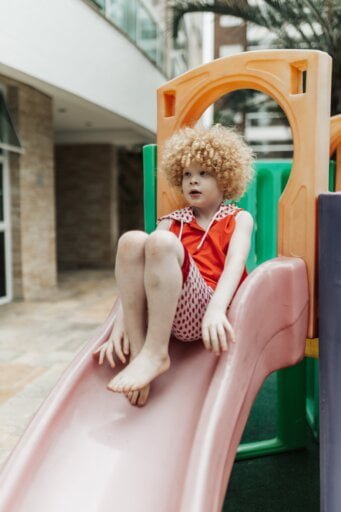Anxiety is a natural part of life, but for kids, understanding and coping with it can be a daunting task. In this article “Explaining Anxiety To Kids”, you will find helpful insights on how to explain anxiety to kids in a way that is friendly, relatable, and easy to understand. By utilizing simple language and relatable examples, you will be equipped with the tools to empower kids to recognize, manage, and overcome their anxiety.
1. What is Anxiety?
Anxiety is a normal and natural emotion that everyone experiences from time to time. It is the body’s response to stress, danger, or uncertainty. When you feel anxious, it means that you are worried or nervous about something. Anxiety can range from mild to severe, and it can affect how you think, feel, and behave.
1.1 Definition of Anxiety
Anxiety can be defined as a feeling of unease or fear that is often accompanied by physical sensations such as a rapid heartbeat, sweating, or trembling. It is a normal part of life and can actually be helpful in certain situations, as it prepares your body to deal with potential threats.
1.2 Types of Anxiety Disorders
While anxiety is a normal emotion, some people experience anxiety to a greater extent, which can interfere with their daily lives. There are different types of anxiety disorders, including generalized anxiety disorder (GAD), panic disorder, social anxiety disorder, and specific phobias. Each type of anxiety disorder has its own unique characteristics and symptoms.
2. Common Symptoms of Anxiety
Anxiety can manifest in various ways, and it is important to recognize the common symptoms so that you can understand what you or someone else may be experiencing.
2.1 Physical Symptoms of Anxiety
When you feel anxious, your body may respond in physical ways. Some common physical symptoms of anxiety include a rapid heartbeat, shortness of breath, sweating, dizziness, stomachaches, headaches, muscle tension, and difficulty sleeping. These physical symptoms are your body’s way of preparing for a potential threat, but they can be uncomfortable and distressing.
2.2 Emotional Symptoms of Anxiety
Anxiety can also impact your emotions and how you feel. You may experience feelings of restlessness, irritability, worry, fear, or a sense of impending doom. You might have difficulty concentrating, feel on edge or tense, or have racing thoughts. These emotional symptoms can make it challenging to focus on tasks, enjoy activities, or feel at ease.

3. How Anxiety Can Affect Kids
Anxiety is not limited to adults and can affect children as well. It is important to understand how anxiety can impact their lives so that we can provide the necessary support and guidance.
3.1 Impact on Daily Life
When children experience anxiety, it can affect their daily activities and routines. They may have difficulty sleeping, eating, or engaging in activities they enjoy. Anxiety can make it challenging for them to focus, pay attention in school, or participate in social events. It may also lead to avoidance behaviors, such as not wanting to try new things or go to unfamiliar places.
3.2 Impact on School Performance
Anxiety can significantly impact a child’s school performance. It can make it difficult for them to concentrate, leading to lower grades or poor academic performance. They may struggle with test anxiety, fearing failure or judgment from others. Additionally, anxiety can affect their ability to participate in classroom discussions or make friends, leading to feelings of isolation or loneliness.
4. Ways of Explaining Anxiety to Kids
Explaining anxiety to kids can help them understand their own feelings and develop strategies to cope with it effectively.
4.1 Using Simple Language
When explaining anxiety to kids, it is important to use language that they can easily understand. Describe anxiety as a feeling of worry or nervousness that everyone experiences from time to time. Reinforce that it is not something to be ashamed of or something they have done wrong. Use age-appropriate examples to help them relate and make sense of their own experiences.
4.2 Comparing Anxiety to Emotions
One way to explain anxiety to children is by comparing it to other emotions they may be familiar with. Help them understand that anxiety is like having a big worry that doesn’t go away. Just like we feel happy, sad, or angry, we also experience anxiety at times. By relating anxiety to other emotions, children can begin to grasp that it is a normal part of their emotional landscape.
4.3 Providing Concrete Examples
Using concrete examples can make it easier for children to understand anxiety. Tell them stories or provide scenarios where anxiety might arise, such as before a big test, meeting new people, or going to the doctor. By using relatable situations, children can better grasp how anxiety can manifest in their own lives.

5. Talking About Anxiety with Kids
Open communication is key when it comes to discussing anxiety with children. It is important to create a safe and supportive environment where they feel comfortable expressing their feelings.
5.1 Encouraging Open Communication
Let children know that it is okay to talk about their feelings and worries. Encourage them to share what they are experiencing and listen attentively without judgment. Make sure they understand that their feelings are valid and that you are there to support them.
5.2 Validating Their Feelings
When children express their anxiety, it is important to validate their feelings. Let them know that it is normal to feel anxious and that many people experience it. Acknowledge their emotions and offer reassurance that they are not alone. Validating their feelings can help alleviate some of their anxiety and make them feel understood.
5.3 Assuring Them of Your Support
Reassure children that you are there to support them through their anxiety. Let them know that they can always come to you with their worries and that you will do your best to help them. Having a strong support system can provide children with a sense of security and comfort as they navigate their anxious feelings.
6. Teaching Coping Strategies
Teaching children coping strategies can empower them to manage their anxiety in healthy ways. Here are a couple of techniques that can be helpful:
6.1 Deep Breathing Exercises
Deep breathing exercises can help calm the body and mind during moments of anxiety. Teach children to take slow, deep breaths in through their nose and exhale slowly through their mouth. Encourage them to focus on their breath and notice how it feels as it enters and leaves their body. Practice these exercises together so they can easily incorporate them into their daily routine.
6.2 Mindfulness and Relaxation Techniques
Introduce children to mindfulness and relaxation techniques, such as guided imagery or progressive muscle relaxation. These techniques help redirect their focus away from anxious thoughts and promote relaxation. Incorporating activities like drawing, coloring, or listening to calming music can also help children relax and reduce anxiety.

7. Seeking Professional Help
In some cases, anxiety may be severe or persistent, requiring the help of mental health professionals.
7.1 Importance of Mental Health Professionals
Explain to children that just like they see a doctor when they are sick, seeing a mental health professional can help with anxiety. Mental health professionals, such as psychologists or therapists, have specialized training in understanding and treating anxiety. Let children know that seeking help is a positive step towards managing their anxiety and that there are professionals who are knowledgeable and empathetic.
7.2 Explaining Therapy or Counseling
If a child needs to see a mental health professional, it is essential to explain what therapy or counseling means. Let them know that therapy is a safe and confidential space where they can talk about their feelings and learn strategies to manage their anxiety. Assure them that therapy is not something to be scared or ashamed of and that it can be a valuable resource for their overall well-being.
8. Encouraging Healthy Habits
Promoting healthy habits is crucial in managing anxiety and promoting overall well-being.
8.1 Promoting Regular Exercise
Regular exercise has been shown to have a positive impact on mental health, including reducing anxiety. Encourage children to engage in physical activities they enjoy, such as playing sports, riding a bike, or dancing. Physical exercise releases endorphins, which are natural mood boosters and can help reduce anxiety symptoms.
8.2 Maintaining a Balanced Diet
A balanced diet plays a role in supporting mental health. Provide children with nutritious meals and snacks that include fruits, vegetables, whole grains, and lean proteins. Avoid excessive intake of sugary or processed foods, as they can contribute to mood swings and worsen anxiety symptoms. Hydration is also important, so make sure children drink enough water throughout the day.
9. Creating a Supportive Environment
Creating a supportive environment at home and in other settings can help children manage their anxiety more effectively.
9.1 Encouraging Self-Care
Teach children the importance of self-care and help them develop self-soothing strategies that work for them. Encourage activities that promote relaxation and well-being, such as reading, taking a bath, listening to music, or spending time in nature. Help them identify activities they enjoy and allocate time for self-care regularly.
9.2 Avoiding Triggers or Stressors
When possible, help children avoid or minimize exposure to triggers or stressors that may worsen their anxiety. Identify situations or environments that make them feel anxious and work together to find solutions. For example, if large crowds make a child anxious, consider planning outings during quieter times or finding alternative activities that they feel more comfortable participating in.
10. Emphasizing the Importance of Patience
Managing anxiety takes time, and it is important to emphasize the need for patience throughout the process.
10.1 Understanding Anxiety Takes Time
Explain to children that managing anxiety is a journey, and it takes time to learn and implement strategies that work best for them. Encourage them to be patient with themselves and reassure them that it is okay to have ups and downs along the way. Let them know that progress may take time, but with support and practice, they will become more equipped to handle their anxiety.
10.2 Reassuring Progress
Acknowledge and celebrate the progress that children make in managing their anxiety. Recognize their efforts and reinforce the positive changes they are experiencing. Remind them that their hard work and perseverance are paying off. Reassure them that you are proud of their progress and will continue to support them every step of the way.
In conclusion Explaining Anxiety To Kids
Understanding anxiety and providing support to children is crucial in helping them navigate their feelings and develop healthy coping strategies. By explaining anxiety in simple terms, promoting open communication, teaching coping techniques, and creating a supportive environment, we can empower children to manage their anxiety effectively and thrive. Remember, you have the power to make a positive difference in a child’s life by being understanding, supportive, and patient as they navigate their journey with anxiety.
Frequently Asked Questions:
Q1: How would you explain anxiety to a child?
Start by describing anxiety as a feeling everyone experiences, like butterflies in the stomach or racing thoughts. Emphasize that it’s okay to feel this way and that there are ways to cope and feel better.
Q2: What is the 3 3 3 rule for anxiety in children?
The 3 3 3 rule involves encouraging the child to name three things they see, hear, and feel during anxious moments. This technique helps ground them in the present and manage their emotions.
Q3: What is a simple explanation of anxiety?
Anxiety is like having worry thoughts that can make your body feel jumpy or restless. It’s important to recognize these feelings and find ways to calm down.
Q4: How do I teach my child to deal with anxiety?
Encourage them to talk about their feelings, teach simple breathing exercises, and create a calming routine. Reinforce that it’s okay to ask for help and that their emotions are valid.
Q5: How do I talk to my 5-year-old about anxiety?
Use age-appropriate language and relate anxiety to familiar feelings like being excited or scared. Share that everyone feels this way sometimes, and it’s normal to talk about it.
Q6: How do I explain anxiety to my parents?
Express your feelings openly, use relatable examples, and let them know what support you need. This fosters understanding and strengthens the bond between you and your parents.
Q7: How to calm down anxiety in kids?
Suggest activities like deep breathing, drawing, or cuddling with a favorite toy. Creating a calm and safe environment helps them manage their anxiety effectively.
Q8: How to calm anxiety in children?
Provide reassurance, listen actively, and teach coping mechanisms like counting to ten or taking deep breaths. Establishing a routine and validating their feelings is crucial.
Q9: What is the 333 rule for anxiety?
The 333 rule involves naming three things you see, hear, and feel during anxious moments. It’s a simple technique to help children stay grounded and manage their emotions.
Q10: What not to say to a child with anxiety?
Avoid dismissing their feelings, saying “calm down,” or minimizing their experience. Instead, offer support, validate their emotions, and encourage open communication.
Q11: Should you tell your kids you have anxiety?
When appropriate, share your experiences with anxiety, emphasizing that it’s okay to talk about feelings. This fosters an environment where emotions are openly discussed.
Q12: Should you push kids with anxiety?
Encourage them gently and provide support, but avoid pushing too hard. Gradual exposure to challenges can help build confidence, but it’s essential to respect their pace.
Q13: What do you say to calm a child?
Offer comforting words like “I’m here for you” or “You’re safe.” Encourage them to express their feelings and reassure them that it’s okay to feel the way they do.
Q14: Should you yell at a child with anxiety?
Yelling is not recommended. It can intensify anxiety and negatively impact their emotional well-being. Communication and understanding are more effective approaches.
Q15: What is depleted mother syndrome?
Depleted mother syndrome refers to the physical and emotional exhaustion experienced by mothers, often due to the demands of caregiving. It’s essential for mothers to prioritize self-care.
Q16: What makes anxiety worse in children?
Factors like stress, changes in routine, or feeling overwhelmed can exacerbate anxiety in children. Recognizing triggers and providing appropriate support can help alleviate these challenges.
Sources:
- Source 1. Explaining Anxiety To Kids
- Source 2. Anxiety
- Source 3. Anxiety Treatment
- Source 4. Anxiety Symptoms
- Source 5. Anxiety Medication

